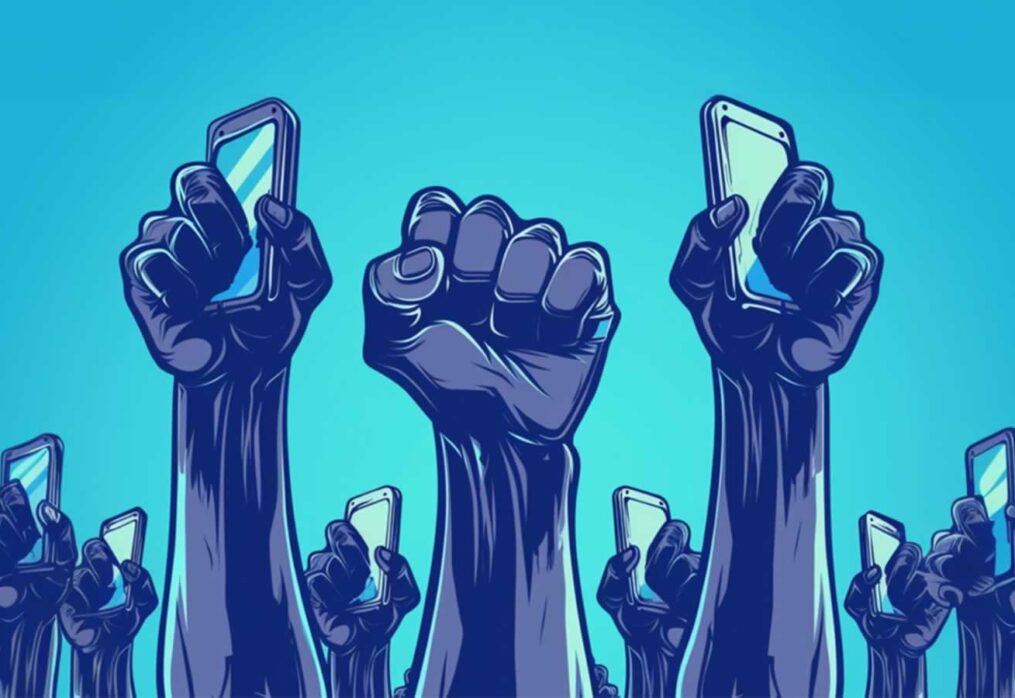DIGITAL ACTIVISM: AMPLIFYING KENYAN VOICES AGAINST THE FINANCE BILL
In the face of the proposed (and now withdrawn) Finance Bill 2024, Kenya has witnessed a remarkable digital revolution. This movement, spearheaded by Generation Z and supported by Millennials, Boomers, and Gen Xers, has utilized various digital platforms to mobilize, educate, and bring their voices to the attention of President William Ruto and his parliament.
This uprising, characterized by innovative use of social media and technology, demonstrates the power of digital activism in modern-day Kenya.
Solidarity through screens: Amplifying Voices Beyond the Streets
While many Kenyans took to the streets to protest, those who could not join the physical demonstrations showed their solidarity from home. Digital platforms became the primary means of increasing the reach of the protests. Through WhatsApp, Instagram and TikTok Kenyans shared their support, contributing to the growing momentum of the movement. This online presence not only amplified the voices of the protestors but also ensured that the message reached a wider audience, including those who might not have been aware of the implications of the Finance Bill.
Mobilization Across Counties: Sharing the Struggle
The digital revolution transcended county borders, as videos of demonstrations from various towns were shared widely. These videos served as powerful visuals, showcasing the collective struggle and determination of Kenyans from different regions. The sharing of these videos fostered a sense of unity and encouraged more people to join the cause.
WhatsApp Videos: Breaking Language Barriers:
One of the most effective tools in this digital movement was the use of WhatsApp videos. It started with one influencer, Mike Muchiri who translated the Finance Bill and its implications into his local language and shared it on X, soon after, others joined in resulting in translation into various local languages, which were widely shared on digital platforms.
This approach ensured that the message reached a diverse audience, breaking down language barriers that often hinder civic engagement. By providing clear and accessible information, these videos empowered Kenyans to make informed decisions and actively participate in the discourse.
Online Civic Education: Informing the Masses
Civic education played a pivotal role in the digital uprising. Influencers and activists took to social media platforms like X, using spaces (formerly known as Twitter Spaces) to educate the public about the Finance Bill. These sessions provided a platform for discussions about the bill’s implications, fostering a more informed and engaged citizenry.
Kelvin Okundi also created an accessible CHATGPT link with various topics about the Finance Bill including how to calculate net salary based on the proposed bill, allowing Kenyans to see its impact on their already strained pockets.
Organizing Through X: Rallying the People
Twitter, or X as it’s now known, became a hub for organizing protests. Flyers detailing the locations and dates of demonstrations were widely circulated on the platform, rallying people to join the movement. The use of hashtags and viral tweets ensured that the information reached a broad audience quickly, demonstrating the effectiveness of social media in organizing and mobilizing communities.
As at 27th June, the #REJECTFINANCEBILL had garnered over 700 Million impressions and 31 Million interactions across digital platforms.
Instagram & TikTok Content: Safety First
Instagram played a crucial role in ensuring the safety of protestors. Content creators like Aunty Social shared videos on how to stay safe during demonstrations, what to wear and how to protect oneself.
This practical advice was essential in preparing individuals for the protests, highlighting the importance of safety in activism.
Technological Innovations: Tools for Safety and Communication:
The digital movement saw the use of various technological tools to enhance safety and communication. The Zello App, a walkie-talkie application, was used to keep protestors in touch and ensure their safety.
Additionally, a group of tech-savvy Kenyans developed a USSD code *665*971# for requesting essential services such as medical assistance, legal support for arrested protestors, reporting brutality etc. This code was particularly crucial when internet access was restricted.
VPNs: Overcoming Internet Censorship
During the protests when the internet and access to social media was limited, Kenyans turned to VPN connections to maintain their digital presence, allowing them to bypass censorship and keep the conversation alive. This demonstrated the determination of Kenyans to voice their concerns, despite attempts to silence them.
Ultimately, the digital uprising against the Finance Bill 2024 showcased the power of technology and social media in modern activism. By leveraging various platforms and innovative tools, Kenyans were able to mobilize, educate, and amplify their voices, making a significant impact on the national conversation.
Given the president’s current reversal on the finance bill’s passing, this movement stands as a testament to the effectiveness of digital activism in the 21st century, and only the future will tell where we’ll go from here.











